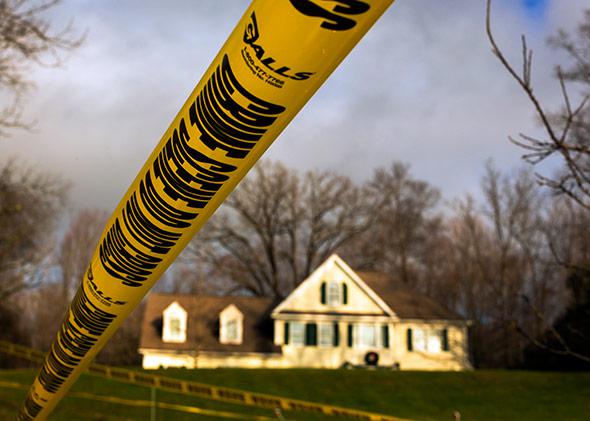This Saturday, all houses of worship in Connecticut will ring their bells 26 times—once, at the behest of the governor, for each victim of the Sandy Hook shooting. But 28 people died in the massacre: 20 students, 6 teachers, the shooter’s mother, and the shooter himself. Why will the bells fall silent two tolls short?
The fraught and complex question of honoring the perpetrator of a mass atrocity along with its victims has long troubled such memorials. The 15 crosses erected to commemorate the victims of Columbine—including two for the shooters—were quickly reduced to 13, then to none at all. Following the tragedy at Virginia Tech, students gathered 33 stones as a makeshift memorial, but the stone representing the shooter was later removed. And on Saturday, the commemorative tolls will leave out not just Adam Lanza but also his mother, who died at his hands but who has posthumously been assigned some share of the blame.
It’s easy to understand the reasoning behind excluding a killer. In the aftermath of a tragedy, the shooter becomes the villain. And his family members become the accomplices. The families of the Columbine victims sued the families of the shooters, claiming they should have seen it coming, and won a settlement. In Newtown, after all, it was Lanza’s mother who bought the guns he used. But she didn’t just enable her deeply disturbed son. She was his first victim, shot to death in her bed, and it’s dishonest and unhealthy to simplify the grieving process by depriving her of her proper remembrance.
Whatever blame people assign to Nancy Lanza, Adam Lanza is the one who fired the bullets: first at his mother, then at the schoolhouse, then at himself. His act, the standard narrative suggests, was one of crazed retribution, then malice, then cowardice. Lanza never deserved to live, and so of course he clearly deserved to die. And now that he is dead, the argument goes, his memory shouldn’t be commemorated: It should be cursed.
This notion has an obvious appeal. Anyone who subscribes to it has every right to do so. But as attractive as the black-and-white picture of villain versus victims may be, it sells our humanity short. Painful though it may be to acknowledge, Adam Lanza and his mother were humans, every bit as much as the other victims were. It is Newtown’s tragedy—and the world’s—that those beautiful children and devoted teachers had their humanity extinguished so soon before their time. But it helps no one to pretend that the tortured 20-year-old at the other end of the rifle—and his mother, also killed that day—was not, in some fundamental respect, every bit as much human.
According to the typical argument, if Lanza was human, he was a deeply evil one, a hideous scourge who deserves no sympathy. But that’s not quite right, either. Looking at the pictures of those 20 children, thinking about the unspeakable atrocities that occurred inside that building, I don’t see an act of evil. I see an act of pure chaos, of psychotic horror unleashed on those least able to defend themselves. It’s tempting to call this evil—but “evil” implies some reasoning behind the action, some motive, some comprehension of the awful pain inflicted on the innocent.
There is nothing to comprehend about Sandy Hook. There is no sense, no logic in a mass shooting. The usual rules of human behavior simply don’t apply. There is no reason to those five minutes of brutality. There is only the total darkness of a mind gone mad. We can look at the pictures and read the transcripts, study the warning signs and debate the responses, but there is no understanding of what happened one year ago. It was an inhuman act, committed by a human.
That is the paradox of the two silent tolls, of the two missing crosses, of the one absent stone. That is the heart of the struggle between anger and forgiveness. It is up to us, in the wake of such meaningless pain, to assert our own humanity, to reject the grim allure of nihilism, to rise above the chaos. As we mourn the lives senselessly destroyed in Newtown, we should keep in mind the common humanity that commands us to grieve for those we do not know and never will. At some point in time, Adam Lanza shared that humanity. That he lost it is a tragedy for us all.
